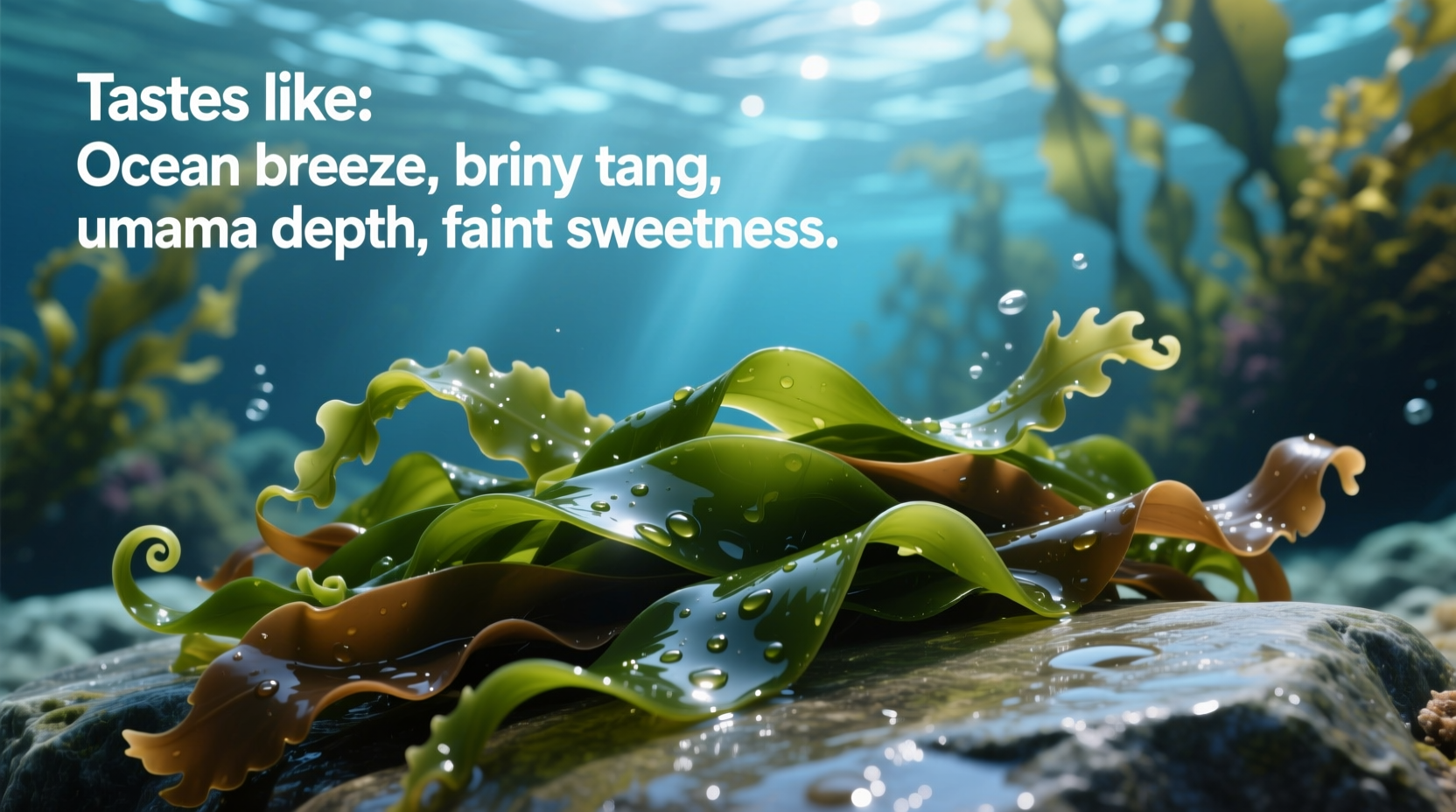Understanding Seaweed's Flavor Profile: More Than Just Ocean Taste
When you ask what does seaweed taste like, you're exploring one of nature's most complex flavor experiences. Forget the misconception that seaweed tastes overwhelmingly fishy—properly harvested and prepared seaweed offers a sophisticated taste profile that has delighted palates for centuries across coastal cultures worldwide.
The Science Behind Seaweed's Signature Taste
Seaweed's distinctive flavor primarily comes from natural glutamates, the same compounds that create umami in tomatoes and aged cheeses. According to research published in the Journal of Agricultural and Food Chemistry, kombu seaweed contains up to 1,000 mg of glutamic acid per 100 grams—making it one of nature's most potent umami sources. This explains why Japanese cooks have used kombu for centuries to create dashi broth, the flavor foundation of countless dishes.
How Different Seaweed Varieties Compare
Your experience with seaweed depends significantly on which variety you try. Each type offers unique characteristics that affect what does dried seaweed taste like versus fresh preparations:
| Seaweed Type | Taste Profile | Best Culinary Uses | Preparation Tip |
|---|---|---|---|
| Nori | Mild, slightly sweet, nutty | Sushi rolls, onigiri, snacks | Toast briefly to enhance flavor |
| Kombu | Deep umami, mineral-rich | Dashi broth, stews, beans | Simmer in water without boiling |
| Wakame | Delicate, slightly sweet, oceanic | Miso soup, salads, seaweed salad | Rehydrate before use |
| Dulse | Meaty, bacon-like, mild saltiness | Salads, potatoes, as bacon substitute | Eat raw or pan-fry until crisp |
| Hijiki | Earthy, robust, slightly metallic | Stir-fries, rice dishes | Soak thoroughly before cooking |
Why Proper Preparation Matters for Flavor
Many people wonder does seaweed taste fishy—the answer depends largely on preparation. Freshly harvested seaweed from clean waters has clean oceanic notes, not fishiness. However, poor handling or processing can create undesirable flavors. Professional chefs recommend:
- Drying technique: Sun-dried seaweed develops sweeter notes than machine-dried varieties
- Storage conditions: Keep dried seaweed in airtight containers away from moisture
- Rehydration methods: Use cold water for delicate varieties like wakame
- Heat application: Brief toasting enhances nori's nuttiness without burning
Historical Context: Seaweed in Global Cuisines
Seaweed's culinary journey spans millennia. Archaeological evidence from the Shandong region of China shows seaweed consumption dating back to 1400 BCE. Japanese records from the 8th century detail kombu harvesting techniques still used today. In Ireland, dulse has been gathered since the 12th century as both food and medicine. This historical timeline demonstrates how different cultures have mastered what does seaweed taste like in their specific culinary contexts.
Practical Tips for First-Time Seaweed Tasters
If you're wondering what does seaweed taste like for beginners, start with approachable preparations:
- Try roasted nori sheets as a snack—they're often compared to savory crackers
- Add small pieces of wakame to miso soup for a gentle introduction
- Use dulse flakes as a seasoning instead of salt for subtle ocean flavor
- Pair seaweed with complementary flavors like rice vinegar, sesame oil, and citrus
Avoid common mistakes that create negative experiences:
- Over-soaking dried seaweed (becomes slimy)
- Using excessive amounts (start with 1/4 teaspoon of flakes)
- Cooking at too high temperature (burns delicate flavors)
When Seaweed Flavor Works Best (And When It Doesn't)
Understanding seaweed taste profile for beginners requires knowing appropriate applications. Seaweed shines in:
- Broths and stocks (kombu creates exceptional umami base)
- Salads (wakame adds texture and subtle flavor)
- Rice dishes (nori adds visual appeal and savory notes)
- Seasoning blends (dulse flakes enhance many dishes)
Seaweed typically doesn't work well in:
- Sweet desserts (flavor clash)
- Dairy-based sauces (texture issues)
- Strongly spiced dishes (gets lost)
Refining Your Seaweed Palate
Developing appreciation for seaweed's nuanced flavors follows a progression many experience:
- Initial reaction: Noticeable oceanic quality that may seem unfamiliar
- Second exposure: Recognition of underlying umami richness
- Regular consumption: Appreciation for subtle variations between types
- Advanced understanding: Ability to identify specific seaweed varieties by taste alone
This sensory journey explains why coastal communities worldwide have incorporated seaweed into their culinary traditions for generations. The flavor becomes increasingly appealing as your palate adapts.

Common Questions About Seaweed Flavor
Many home cooks have specific questions about what does nori taste like compared to other seaweed and related concerns:











 浙公网安备
33010002000092号
浙公网安备
33010002000092号 浙B2-20120091-4
浙B2-20120091-4